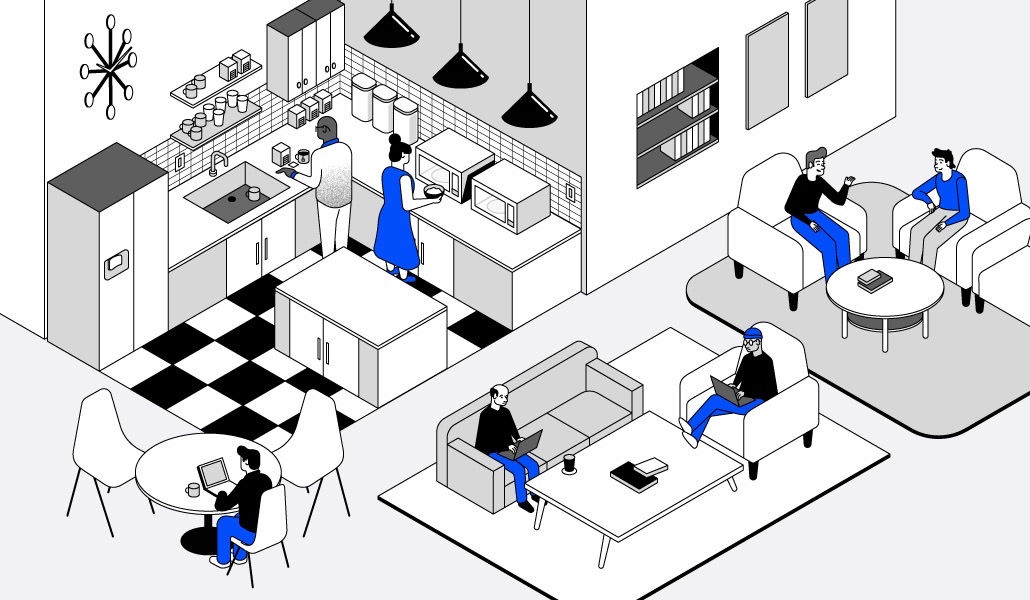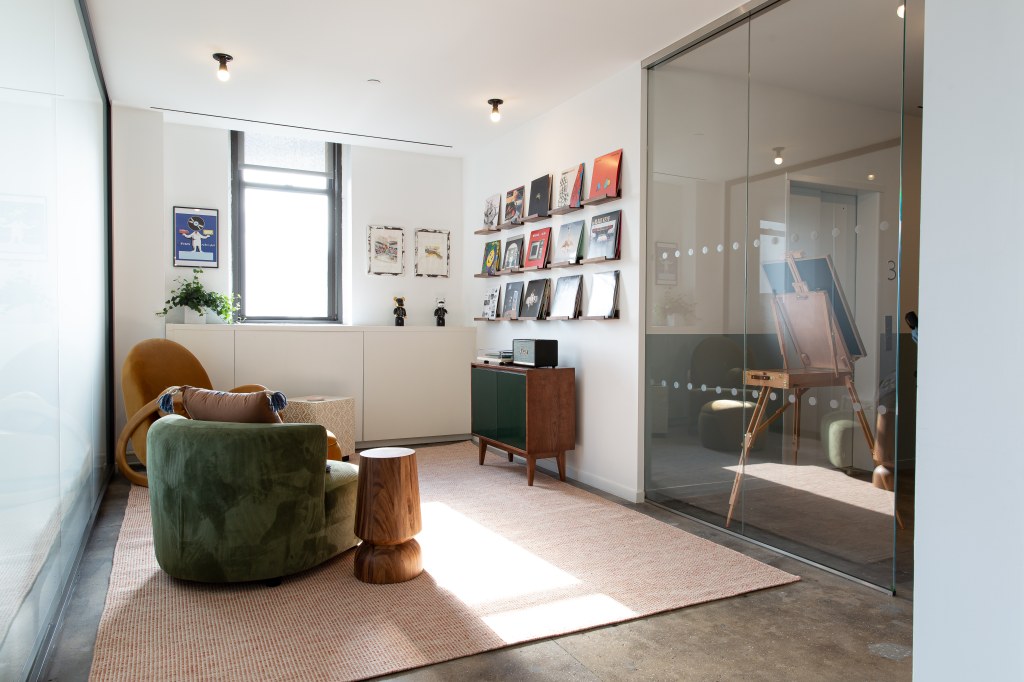Employers are creating offices that feel like home to get employees to leave their actual homes

If employees and visitors feel more like they’ve entered a friend’s living room instead of the North American headquarters of monday.com, the design team has accomplished its goal.
Fostering a sense of tranquility at the office has been one of monday’s priorities since it launched in 2012, as a cloud-based platform for users to create their own applications and work management software. But with its recently opened New York City-headquarters, and leadership’s gentle request that employees within commuting distance come to the office two to three days per week, it’s never been more important. Every aspect of the new HQ was designed with wellbeing, tranquility and comfort in mind.
“We created an office that is an extension of home,” said Keren Reznik, a senior workplace designer and team lead at monday.com. “We actually have the opportunity to do things in an office that you don’t necessarily have at home, especially if you live in a small New York apartment. When you see things around you that make you imagine, that make you dream, I think it instantly creates a very nice cozy feeling and atmosphere within you. That reduces anxiety.”
As the return-to-office movement continues, an increasing number of employers are considering not only how to incentivize employees with free food and massage chairs, but also how office design and layout can quell employee anxiety about leaving their Covid-19 bubbles. It’s also an opportunity for them to demonstrate their commitment to physical and emotional well-being. For many, that means revamping offices to include calming, neutral tones, spaces for meditation and yoga and yes, medical suites.
Michel Fiechter, managing executive at TPG Architecture, says considering how physical space impacts people’s well-being has never been more important, particularly given this is the first time many have even worked in an office. He recently met with a promising job candidate in-person and could tell she felt anxious about it since it was her first face-to-face job interview.
“There are people who have been insulated at their homes for years,” said Fiechter.
“It’s the most exciting time to be an architect because what I do day-in and day-out matters at every level. I want to create an environment that helps reduce stress, help employees detox and in fact do their best work.”
Like Reznik, Fiechter uses the “work should feel like home” analogy. And perhaps that’s what it will take to get people to return to the office. After all, so many have worked from home for so long — and don’t necessarily want to leave their comforts of home.
Neutral design
At monday.com, Reznik and her team built on that concept by omitting company branding, logos or color schemes. There’s also no receptionist or check-in desk that visitors need to stop at. Instead, there is a table with coffees and teas, all part of creating a workplace atmosphere that’s unlike, well, work.
“When you come from home to a branded space it creates an absolute atmosphere of work,” she said. “We want to give people the atmosphere that they’re visiting our home.”
There are nooks “every few steps,” encouraging people to gather and relax. The library is a designated quiet place where no meetings are allowed. Another space is called the record corner, and has a record player and shelves of records. Employees are encouraged to discover new music and take a moment to relax with headphones that are provided. They’re also encouraged to bring their own music selection to add to the collection.

“Music is a stress reliever,” Reznik said. “Giving people the opportunity and also the legitimacy to sit and listen to music for a moment is very valuable.”
Meditation and yoga rooms
Instead of installing full gyms, Fiechter said his clients are increasingly asking for yoga rooms that can also be converted to meeting rooms. And while providing food is still a mainstay, many of his clients are opting for organic fruits and even crudite platters instead of chips, cakes and protein bars.
Meditation rooms have long been a staple at monday.com offices. The new HQ has several, and doesn’t require an employee to formally book the space. Leadership wants people to use them “spontaneously” as they need for reflection, quiet time and small catch-up sessions. A sign on the door lets passersby know if the room’s occupants prefer not to be disturbed.
The spa and lactation room for breastfeeding mothers are located just off the meditation rooms. There are several massage chairs in the spa along with comfy seating, blankets, specialty teas and books about relaxation.
“Good design puts our people first,” Fiechter said. “We have to think about how they engage and the culture you want to build. If you build a good culture they will come.”
